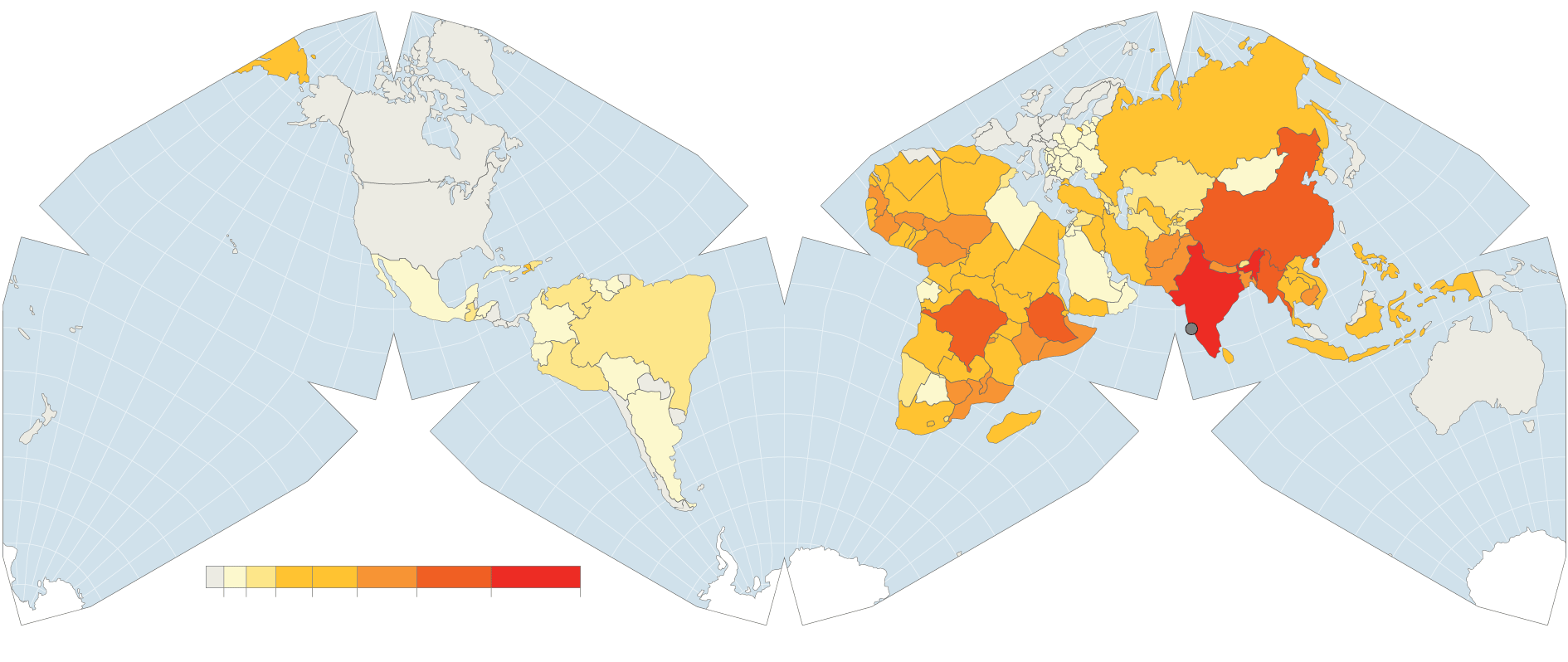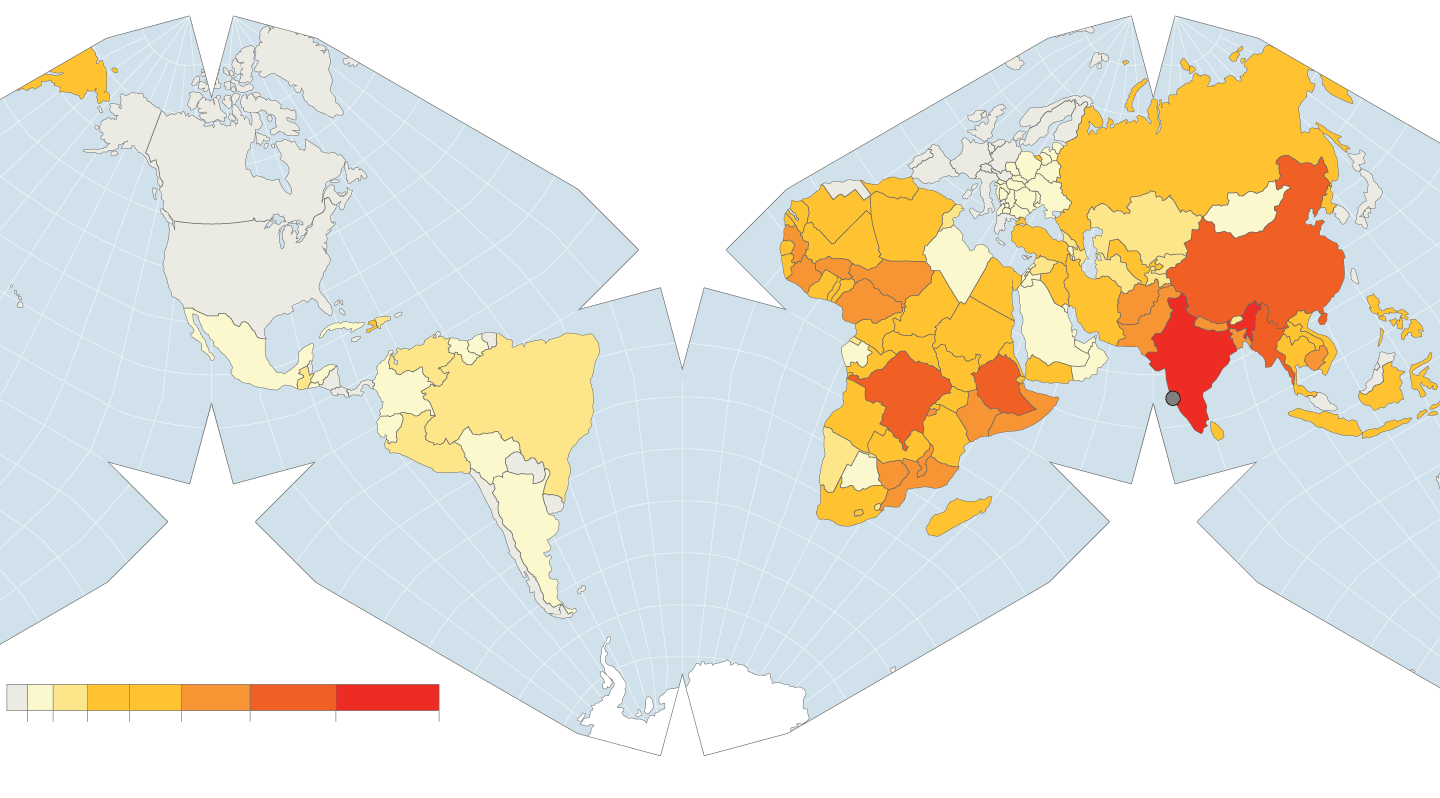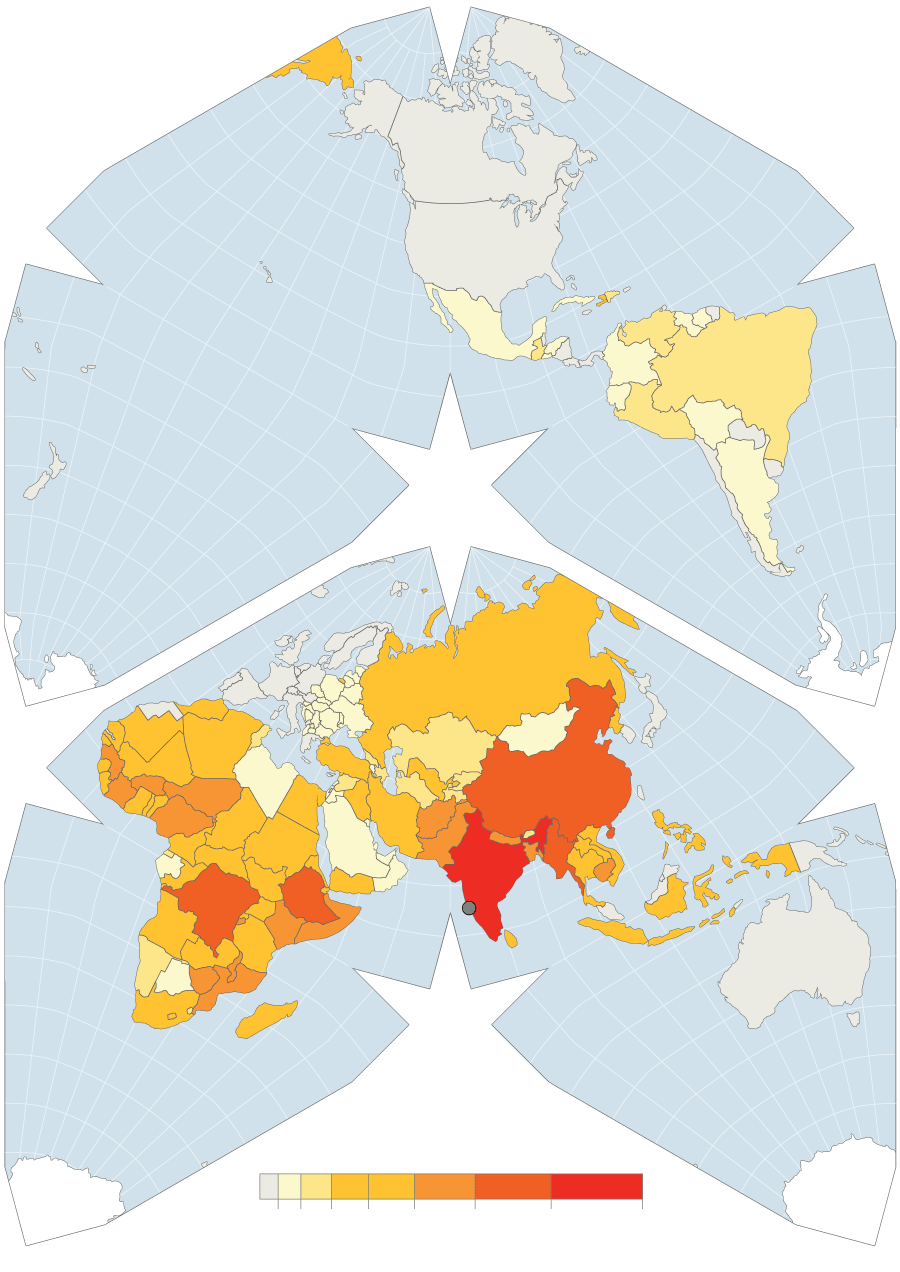Rabies has been known since antiquity, and has been completely preventable since Pasteur developed a vaccine more than a century ago. But the World Health Organization still considers it “a neglected disease of poor and vulnerable populations.”
Why? Rabies, one expert has written, “became a neglected disease when it was eliminated from Europe and North America.”
The vast majority of the estimated 59,000 human deaths each year from rabies are in Africa and Asia, in countries with large populations of free-roaming dogs that provide a so-called reservoir for the virus.
The virus kills any dog it infects. But if a rabid dog transmits the disease to one other dog before it dies, the virus remains alive and able to spread among dogs and to humans.
Rabies From Dogs
An estimated 59,000 people die each year after being bitten by rabid dogs.

Rabies has been eliminated in dogs throughout much of North America and Europe.
India accounts for about a third of rabies deaths from dogs, but the disease is endemic in 120 countries.
Rabies deaths from dogs
20,000
(estimated)

Rabies has been eliminated in dogs throughout much of North America and Europe.
India accounts for about a third of rabies deaths from dogs, but the disease is endemic in 120 countries.
Rabies deaths from dogs
20,000
(estimated)

Rabies has been eliminated in dogs throughout much of North America and Europe.
India accounts for about a third of rabies deaths from dogs, but the disease is endemic in 120 countries.
Rabies deaths from dogs
20,000
(estimated)

Rabies has been eliminated in dogs throughout much of North America and Europe.
India accounts for about a third of rabies deaths, but rabies is endemic in 120 countries.
Rabies deaths from dogs
20,000
(estimated)

Canine rabies has been eliminated in much of North America and Europe.
India accounts for about a third of rabies deaths.
Rabies deaths from dogs
20,000
(estimated)
Some countries, like Australia, never had canine rabies, but have other viruses in the same family, lyssaviruses.
Canine rabies has been eliminated in the United States, Western Europe, Canada, Japan and Chile, Uruguay and Paraguay. And its toll has been drastically reduced in much of Central America and South America through vast vaccination programs involving yearly nationwide campaigns.
[Like the Science Times page on Facebook. | Sign up for the Science Times newsletter.]
“In 2016, 10 deaths due to dog-mediated rabies were reported in the Americas — eight in Haiti and two in Guatemala,” according to a 2018 report on global rabies from the W.H.O. There were 23 deaths from rabies spread by other species in the same year.
Africa and Asia have the greatest number of rabies deaths, although estimates are rough. About 20,000 people die each year in Africa and in India.
Deaths in China in 2015 were estimated at more than 6,000, but the difficulty of getting accurate numbers means that the figure could be as low as 1,000 or as high as 11,000.
Some countries have gotten rid of canine rabies only to have it come back. Bali was considered rabies-free, but a new outbreak began in 2008 and is still going on.
In 2015, the W.H.O. announced a goal of zero human deaths from canine rabies by 2030, emphasizing dog vaccination and treatment after dog bites. Several global agencies of the United Nations and the W.H.O. are involved, as well as local and regional government agencies.



